Sapsucker Birds: Woodpeckers With a Sweet Tooth
Updated: Jan. 19, 2024
Meet the sapsuckers, tree sap eating members of the woodpecker family. Learn what to do if a sapsucker bird damages a tree.
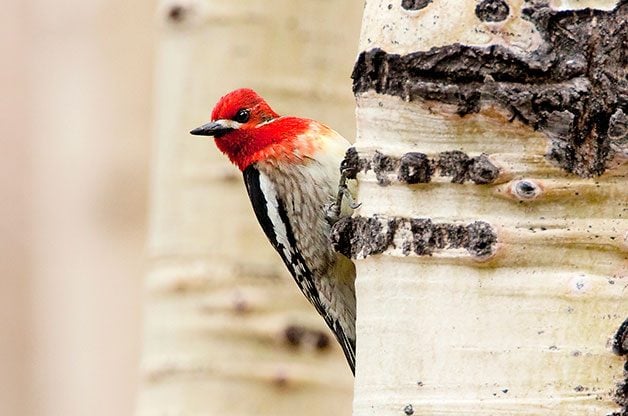
A sapsucker bird belongs to the woodpecker family, but if you’re wondering why this bird drills into trees, its name is a dead giveaway. (Hint: It’s not looking for bugs!) Four kinds of sapsuckers are found across North America: yellow-bellied, red-naped, red-breasted and Williamson’s.
The sapsucker bird name is somewhat misleading. Instead of sucking sap, the birds sip it. The hairlike structures on the tips of their tongues act a bit like a paintbrush and help them drink the oozy sap.
Meet the red-headed woodpecker: redheads of the bird world.
What Do Sapsuckers Eat?
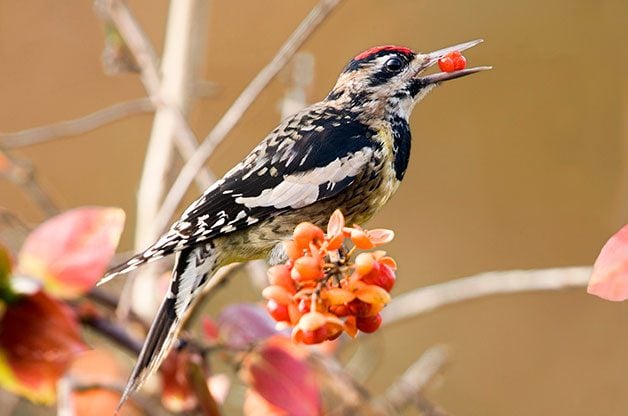
When sweet sap oozes from a tree, birds, insects and other animals may stop by for a taste. Humans do, too. (Think maple syrup.) But in the bird world, sapsuckers are unique for drilling and maintaining sap wells in live tree trunks. Although they also eat wild fruits, insects and nuts, the sticky stuff is a major part of their diet.
Sapsucker wells are easy to recognize. The bird uses its chisel-like beak to drill a dozen or so small holes, less than half an inch apart, in a horizontal line. Then it comes back, over and over, to lick up the sap that leaks out.
When the flow starts to falter, usually after a few days, the bird makes a second row of holes just above the first. Later it makes a third row above the second, and so on. A rectangular pattern of neatly spaced holes in tree bark is a sure sign that a sapsucker is at work.
Do woodpeckers kill or damage trees?
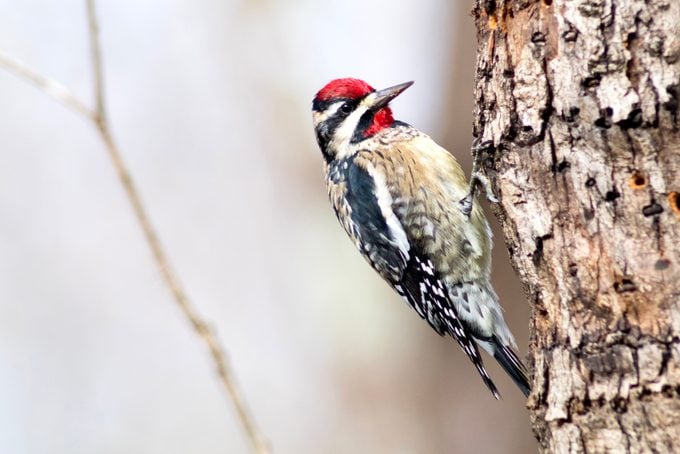
Whether it’s in permanent territory or just pausing during migration, a sapsucker typically maintains multiple sets of sap wells in different trees. It takes serious effort to make sure the tiny wells stay open for more than a few hours, and keeping other creatures at bay adds to the challenge. Some interlopers, such as hummingbirds or warblers, are small and easy to chase away.
When insects are drawn to the well, the sapsucker may elect to eat them as an additional food source. But squirrels or large woodpeckers are more difficult to defend against, and if a big animal, such as a porcupine, decides to sample the goods, the sapsucker may have to go elsewhere.
Psst—check out the 4 best foods for woodpeckers.
Where Do Sapsuckers Live?
Yellow-Bellied Sapsucker
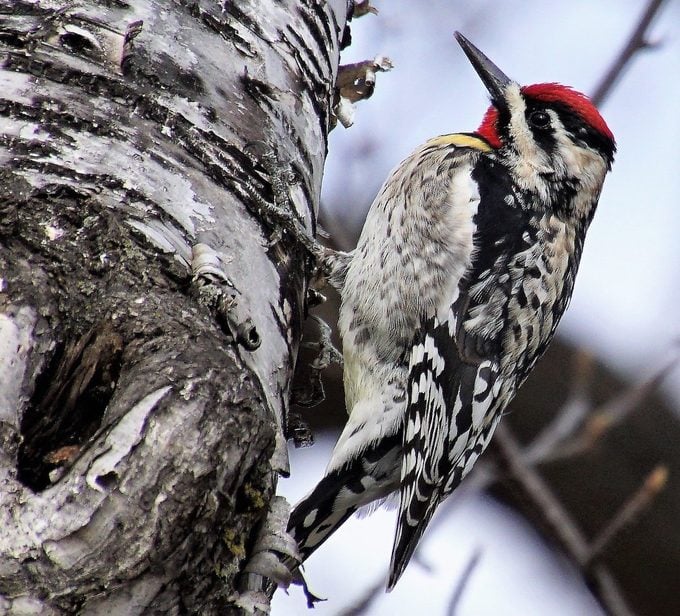
Of all sapsuckers, the yellow-bellied is most widespread. It nests in cool evergreen forests all across Canada (and very locally into eastern Alaska) and in the Northeastern states. During migration, it passes through all areas east of the Rockies. It spends the winter in the Southeastern states and into Mexico and Central America.
Red-Naped Sapsucker
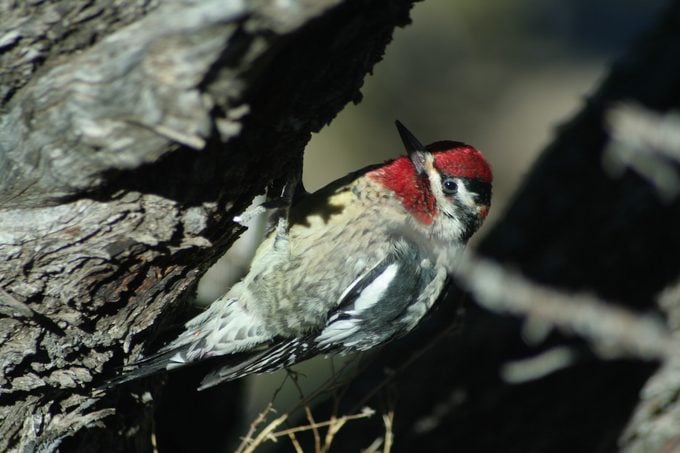
You’ll find the red-naped sapsucker in the Rocky Mountain region of the U.S. and southwestern Canada. It looks very similar to the yellow-bellied, with just a little more red on its head.
Acorn woodpeckers are the ultimate stockpilers.
Red-Breasted Sapsucker
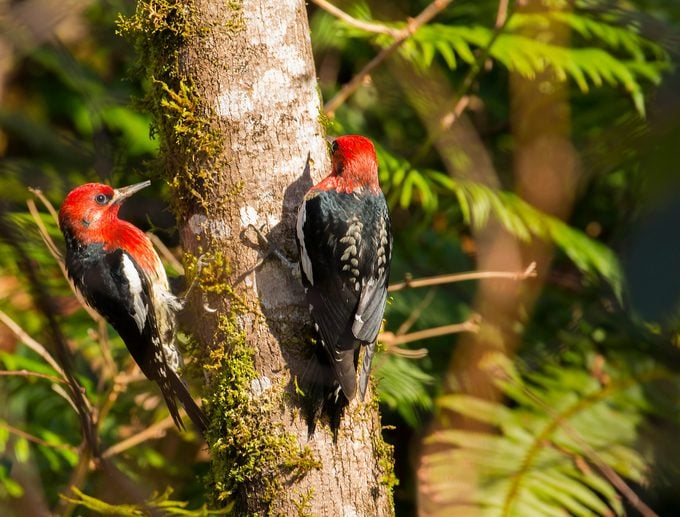
From central California to southeastern Alaska, the red-breasted sapsucker takes over. This colorful bird was once lumped in with the yellow-bellied and red-naped—they were thought to be the same species. We now know that the three are close relatives and may interbreed where their nesting ranges meet.
Williamson’s Sapsucker
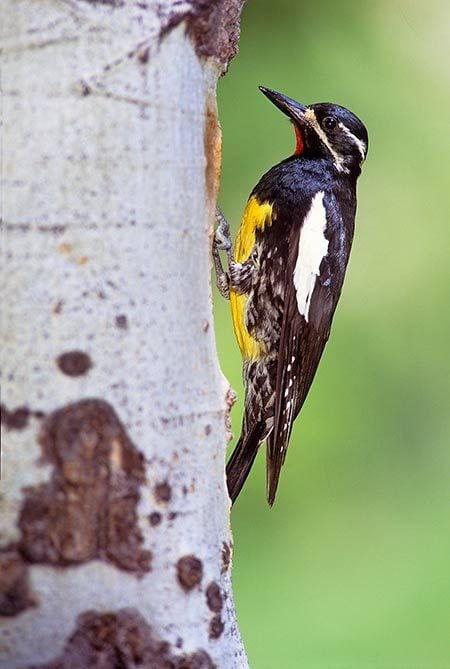
Finally there’s the fourth member of the group: Williamson’s sapsucker, an uncommon bird found in the Western mountains. It has typical sapsucker habits but doesn’t look like the others. The male is mostly black, while the female is brown with heavy black barring.
Discovered in the 1800s, female and male Williamson’s sapsuckers look so different from each other that until they were seen sharing the same nests, they were thought to be separate species.
Discover mind-blowing woodpecker facts you should know
How Do Sapsuckers Build Bird Nests?
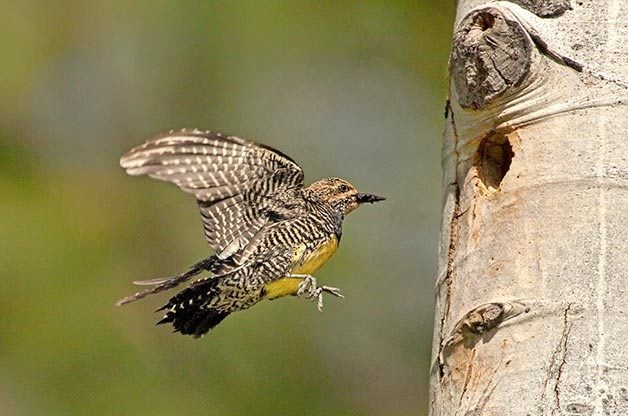
In summer, sapsuckers live in cool climates, such as those found in the Northwoods, mountains or along the Pacific Coast. They nest from April through July, using their tree-drilling skills to dig cavities for their families. Unlike most birds, the male sapsucker, not the female, does most of the nest hole excavating.
Other woodpeckers nest in dead holes or limbs, but a sapsucker bird chooses live trees, especially aspen or birch. The ones they pick are often infected with a fungus that rots out the heartwood, making the soft interior easier to dig into.
Here’s how to tell the difference between downy vs hairy woodpeckers.
Look for Sapsuckers in the Woods
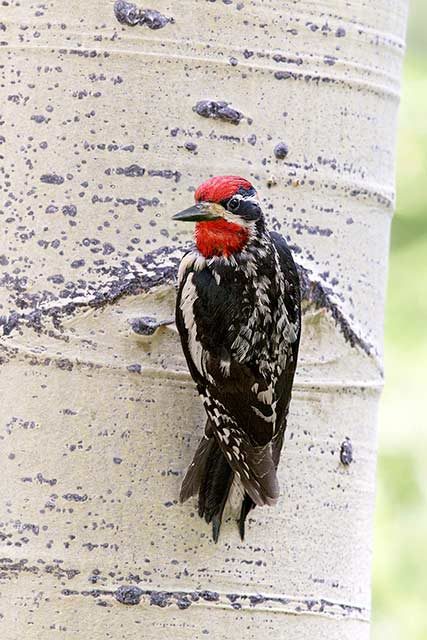
Sometimes a sapsucker visits a suet feeder and, on rare occasions, one may sample the sugar water from a hummingbird feeder. But in general, the only way to attract these birds is to have a yard with a variety of trees—particularly maple, elm, birch, aspen and pine.
If you discover a sapsucker working a few sap wells on a large tree, consider that a lucky find. It’s unlikely to hurt the tree in the long run, and you’ll have the opportunity to watch one of our oddest birds up close.
Learn how to identify northern flickers and pileated woodpeckers.
Sapsucker Bird Tree Damage
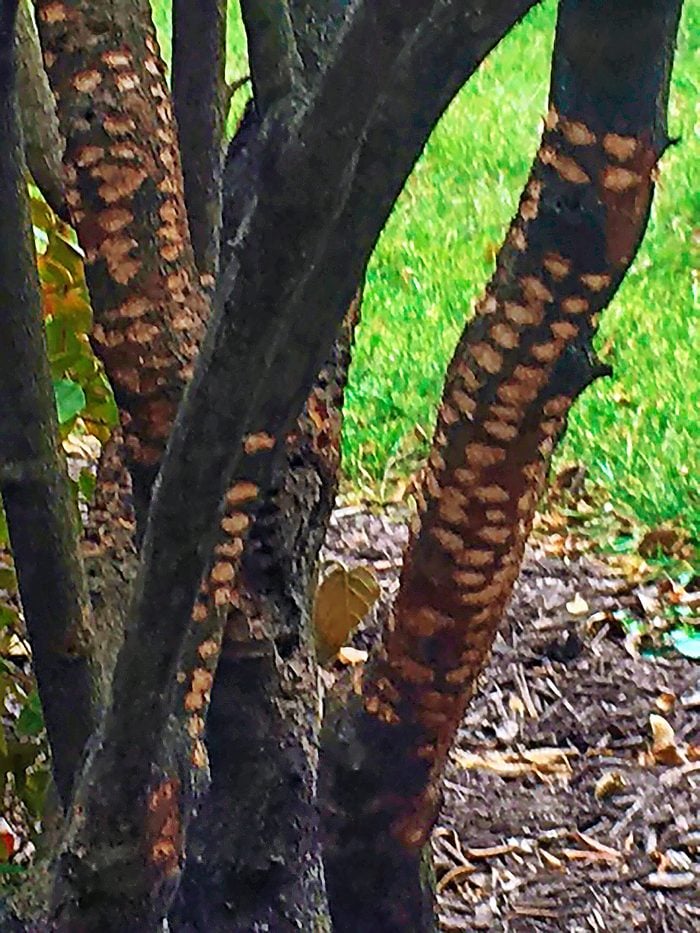
On rare occasions, sapsuckers focus so much on a small tree that they weaken it or even kill it. In most cases, though, the rectangular holes they make don’t directly hurt the plant. However, they do make entryways for harmful wood-decaying fungi and bacteria.
If you notice a sapsucker drilling an exceptional number of sap wells on a favorite plant, try keeping that section of trunk or limb wrapped in heavy burlap or hardware cloth until the bird gives up and takes its tree-tapping activities elsewhere. You can also hang pie pans, old CDs or colorful streamers to scare the birds and provide a bit of relief. Monitor plants for sapsucker damage and adjust your strategy as needed.
Next, learn all about red-bellied woodpeckers.

